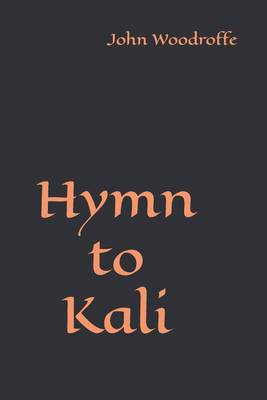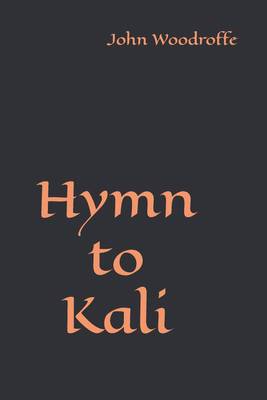
- Retrait gratuit dans votre magasin Club
- 7.000.000 titres dans notre catalogue
- Payer en toute sécurité
- Toujours un magasin près de chez vous
- Retrait gratuit dans votre magasin Club
- 7.000.000 titres dans notre catalogue
- Payer en toute sécurité
- Toujours un magasin près de chez vous
15,45 €
+ 30 points
Description
This celebrated Kaula Stotra, which is now translated from the Sanskrit for the first time, is attributed to Mahākāla Himself. The Text used is that of the edition published at Calcutta in 1899 by the Sanskrit Press Depository, with a commentary in Sanskrit by the late Mahāmahopādhyāya Kṛṣhṇanātha Nyāya-pañcānana, who was both very learned in Tantra-Śāstra and faithful to his Dharma. He thus refused the offer of a good Government Post made to him personally by a former Lieutenant-Governor on the ground that he would not accept money for imparting knowledge. Some variants in reading are supplied by this commentator. I am indebted to him for the Notes, or substance of the notes, marked K. B. To these I have added others, both in English and Sanskrit explaining matters and allusions familiar doubtless to those for whom the original was designed, but not so to the English or even ordinary Indian reader. I have also referred to the edition of the Stotra published by Gaṇeśa-Candra-Ghoṣa at Calcutta in 1891, with a translation in Bengali by Gurunātha Vidyānidhi, and commentary by Durgārāma-Siddhāntavāgīśa Bhattācārya. I publish for the first time Vimalānanda-Svāmī's Commentary to which I again refer later. When in this Introduction or in the Commentary I have not mentioned these two works my authorities are the Tantras or Tāntrik works which I cite, or. the information I have gathered from those whom I have consulted. One of the chief features of this Stotra is that it gives the mantroddhāra of the Dakshina-Kālikā. It not only gives us the Dhyāna, Yantra, Sādhana and Svarūpa-varnanā of the Mahādevī, but it also contains the chief Mantras of Dakṣiṇakālikā. The adjective "Tava manu-samuddharaṇajanu" qualifying "idam stotram" in Śloka 21 expressly states this fact. Among the various Mantras of Dakṣiṇā Kālikā the greatest is the "Vidyā-rājñī" consisting of 22 syllables (Dvāviṁsākṣarī). This mantra gives the fullest and the truest symbol of the Svarūpa of Her. This mantra is contained in the first five Ślokas. So the first five Ślokas give us altogether 22 akṣaras i.e. the full Vidyārājñī. In Vimalānanda-Svāmī's Tīkā of the 5th Śloka in the revised Sanskrit text he has proved by quotations from the 9th patala of Śāktānanda-tarangiṇī that this 22-syllabled mantra is the full and true representation of the Svarūpa of the Mahādevī.
Spécifications
Parties prenantes
- Auteur(s) :
- Editeur:
Contenu
- Nombre de pages :
- 128
- Langue:
- Anglais
- Collection :
- Tome:
- n° 27
Caractéristiques
- EAN:
- 9781656366283
- Date de parution :
- 06-01-20
- Format:
- Livre broché
- Format numérique:
- Trade paperback (VS)
- Dimensions :
- 152 mm x 229 mm
- Poids :
- 199 g







